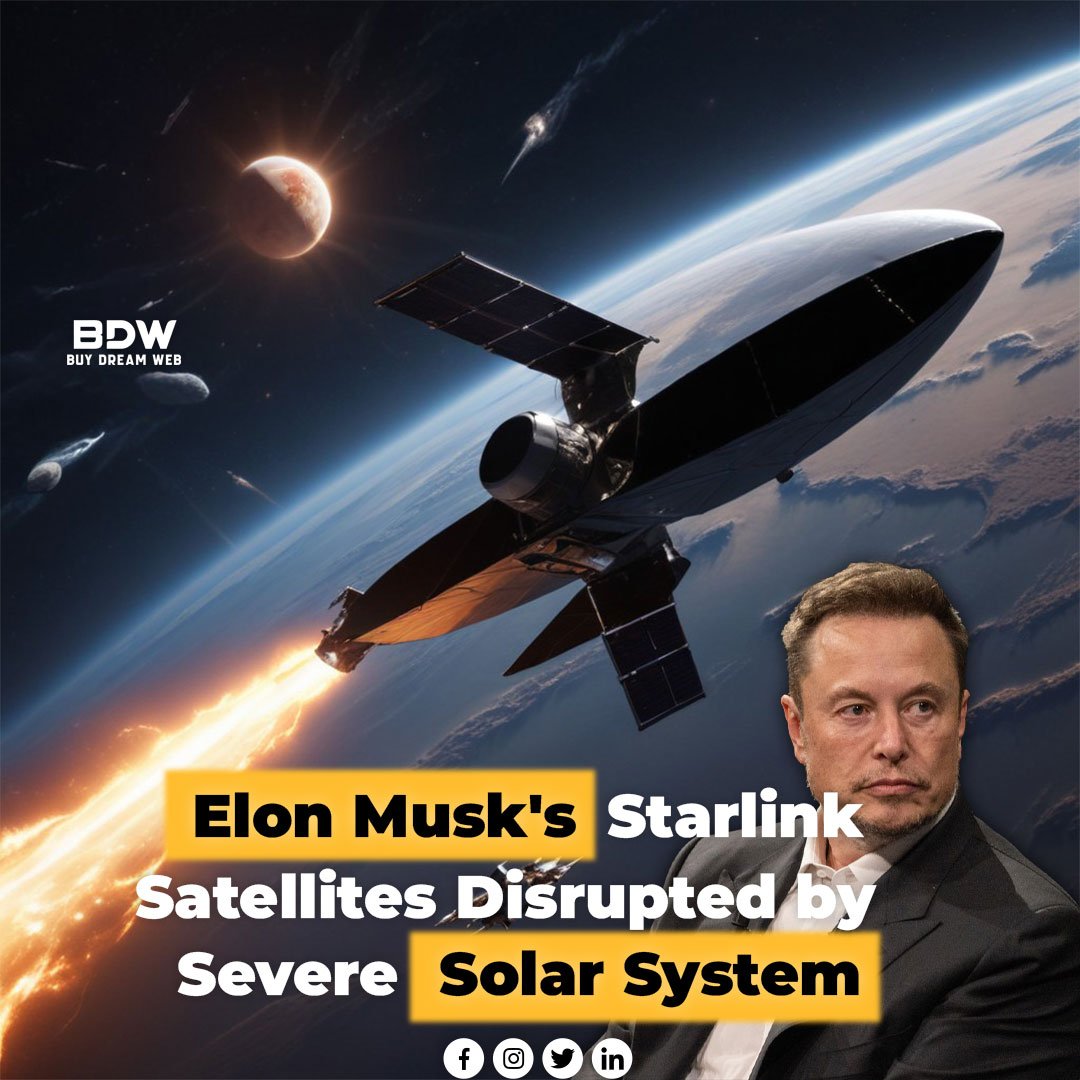A Solar Storm Strikes: Elon Musk’s Starlink Fleet Faces the Fury of the Sun
Elon Musk’s ambitious Starlink project, aiming to deliver internet access to remote corners of the globe, has encountered a celestial hurdle. A recent severe solar storm disrupted a significant number of Starlink satellites, raising concerns about the vulnerability of space-based internet infrastructure. Let’s delve deeper into this event, exploring the causes, consequences, and potential solutions for safeguarding future satellite constellations from solar fury.
A Fury Unleashed: Understanding Solar Storms
Our sun, a seemingly benign ball of fire, can erupt in unpredictable outbursts of energy known as solar storms. These storms unleash a torrent of charged particles, the solar wind, which can wreak havoc on technology on Earth and in space. Here’s what makes these storms so disruptive:
- Geomagnetic Storms: The solar wind interacts with Earth’s magnetic field, triggering geomagnetic storms. These storms induce powerful electrical currents that can disrupt power grids, communication systems, and satellites.
- Satellite Damage: The charged particles can damage or disable electronics on board satellites, potentially causing malfunctions or complete losses.
Starlink Under Siege: The Impact of the Solar Storm
The recent solar storm impacted Starlink in two key ways:
- Satellite Drag: The charged particles increase atmospheric drag on satellites in low Earth orbit (LEO), like Starlink. This drag can cause them to lose altitude and potentially fall out of orbit.
- Electronics Disruption: The intense radiation can damage sensitive electronics on board the satellites, leading to malfunctions or complete failure.
A Degraded Service: The Ripple Effect for Users
The damage to Starlink satellites resulted in:
- Limited Internet Access: Users, particularly those in remote areas relying on Starlink for connectivity, experienced degraded service or outages.
- Highlighting Vulnerability: The event exposed the vulnerability of space-based internet infrastructure to natural space weather phenomena.
- Raising Concerns: It raised concerns about the long-term reliability of Starlink and similar projects.
Shielding from the Sun: Strategies for Protecting Satellites
The challenges posed by solar storms necessitate strategies to protect satellite constellations:
- Hardening Satellite Electronics: Designing satellites with more radiation-resistant electronics can enhance their resilience during solar storms.
- Active Shielding Technologies: Developing technologies to deflect or absorb the charged particles before they reach the satellites could be explored.
- Constellation Maneuvering: Satellites could be equipped with propulsion systems that allow them to temporarily raise their orbits during predicted solar storm events.
Beyond Starlink: A Broader Conversation About Space Weather
The Starlink incident underscores the need for:
- Improved Space Weather Forecasting: More accurate and timely forecasting of solar storms would allow satellite operators to take precautionary measures.
- Global Collaboration: International cooperation in space weather research and mitigation strategies is crucial to protect critical space infrastructure.
- Rethinking Satellite Design: Spacecraft designers need to consider space weather risks and incorporate robust protection measures into future satellites.
A Celestial Setback, Not a Grounding:
The Road Ahead for Starlink:
While the solar storm caused disruptions, it’s important to note that:
- Starlink is Still Operational: Despite the impact, a significant portion of the Starlink constellation remains functional and continues to provide internet access.
- Learning from the Event: This incident provides valuable data for improving the resilience of Starlink and similar satellite constellations in the future.
- The Race for Space-Based Internet Continues: While challenges exist, the potential benefits of space-based internet access remain significant, and the race to develop reliable systems will likely continue.
Article Link: https://www.brecorder.com/

 +44 747720 4635
+44 747720 4635


Comments are closed